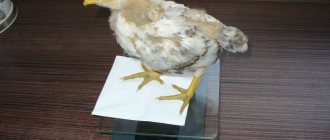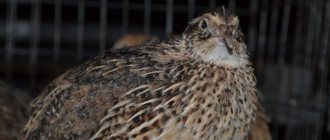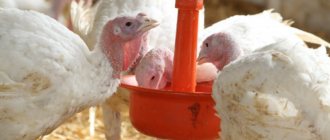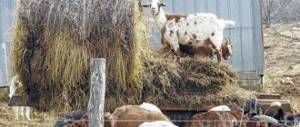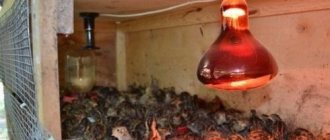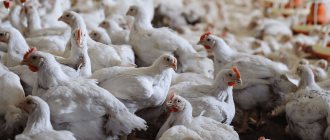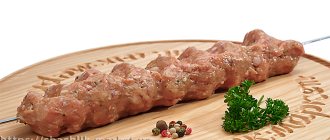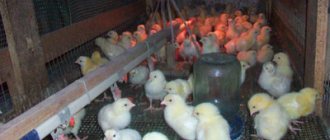Features of feeding chickens with zucchini
What kind of feed laying hens eat affects their health. Some foods can cause digestive upsets and wash away beneficial substances from the body. Poultry needs vegetables. The best ones include pumpkins, zucchini, carrots, cabbage, and beets. Chickens eat them with pleasure.
Experienced farmers recommend feeding laying hens and broiler chickens zucchini, chopping it using a grater or an electric meat grinder. The vegetable is good for chickens - it improves their productivity. In addition, the laid eggs are tasty and large in size.
Zucchini can be given to broilers, but it is worth considering that this vegetable in its raw form prevents obesity. After cooking, fewer microelements and vitamins remain in the vegetable, but starch is formed, which contributes to the deposition of fat in broilers.
Feeding rules
Small birds need to be fed differently than adults. Like any other living creature, chickens need a gradual introduction of complementary foods.
Do you feed your broilers zucchini?
Not really
How much and in what form to give zucchini to chickens
To begin with, it is recommended to grate the vegetables on a coarse grater and give them to the chickens in this form. It will not be superfluous to mix it with mixed feed if it is already included in the diet.
After the broilers begin to eat greens, the zucchini is served in a larger form, namely cut into small circles, so that the chickens have access to the pulp . They actively peck it out, leaving only one crust.
Vegetables should be given raw, and their share in the entire diet can reach 20%.
After grain is added to the chickens' complementary food, you can mix it with zucchini, cut into small pieces . This mixture swells and becomes easily digestible if left to steep for a couple of hours before feeding.
How and when to give chickens greens and grass: feeding standards
Read
Eggshells in the diet of chickens and chickens
More details
Are potatoes good or bad for adult broilers and chickens?
Look
How much and in what form can zucchini be given to adult broilers?
Expert opinion
Novoselova Sofya Ivanovna
Farmer. 20 years of experience.
Ask a Question
In adult birds, the functioning of the gastrointestinal tract is already fully formed. Therefore, you can safely include zucchini in their diet, serving the vegetables raw.
You need to understand that feeding birds must be balanced, and the food must contain all the necessary vitamins and nutrients. Zucchini is an addition to the main green food.
You can mix the vegetable with grass, grain, and mixed feed, if the latter is used in feeding. You can also prepare mash, which consists of vegetables, legumes and some additives . This feeding option is considered ideal for laying hens.
One of the mash options:
- yeast;
- potato;
- greenery;
- carrot;
- zucchini;
- corn;
- beans;
- salt;
- fish fat.
Of the entire mixture, vegetables should make up 35%, greens - 25%, grains and beans - 40%. You need very little salt - about 1 gram. Yeast and fish oil are added at discretion depending on the health status of the birds.
Proportions are based on one adult broiler.
Cross refers to the meat direction, characteristics, content
Broiler Ross 308
Early maturing cross with high rates of meat productivity and egg production
Broiler Ross 708
Bohemian meat chickens with exuberant growth. Main characteristics, nuances of content
Broiler Cobb 500
Early maturing broilers of Dutch selection with good meat productivity and calm disposition
Broiler Gibro-6
Domestic meat and egg cross with minimal maintenance and feeding costs
Broiler-61
Compact, early maturing chickens with a universal focus that do not require large areas for keeping
Broiler-M
An early maturing cross of universal orientation, perfectly adapted to Russian conditions
Broiler Shift
An extra-heavy meat hybrid that will generate income without any maintenance difficulties
Broiler Cobb 700
Raw
Feed for adult laying hens should be balanced. It is recommended to include not only grains, but also vegetables in the diet. Zucchini is considered a storehouse of nutrients. In addition, they can be stored for a long time. They are collected in the fall and stored in a cool, dry place.
If necessary, raw zucchini is chopped, but the peel is not removed. It is not recommended to replace full feeding with zucchini. This is an addition to green food, which is given after mixing with chopped grass.
With frequent use of this valuable product, chicken does not change its taste. However, poultry meat becomes more tender, and the egg production of laying hens increases.
Is it possible to give zucchini to broiler chickens? You can start introducing this vegetable into the diet of small chickens 3 weeks after hatching. Otherwise, the chickens will develop indigestion, which can lead to their death.
The berries are fresh and not very
Currants, blueberries.
Rich in vitamin C, microelements, flavonoids, tannins.
Currants increase the pH of the stomach to the alkaline side, due to which it has an antimicrobial effect. Removes waste and toxins. Contains a large amount of folic acid, which increases fertility.
It is not recommended to give chickens and laying hens a lot of blueberries - they contain a high content of tannins, which slow down peristalsis.
Raspberries, blackberries.
Contains vitamins B, A, PP, micro- and macroelements (potassium, iron). As well as organic fatty acids and substances that lower the level of fat in the liver.
In large quantities they cause digestive disorders and impair egg production.
Be sure to read:
Is it possible to give dandelions to chickens?
Watermelon.
Watermelon pulp and seeds contain vitamins B1, B2, PP. As well as provitamin A, folic acid, carotenoids, microelements (manganese, potassium, iron). Stimulates digestion and metabolism processes. Strengthen the immune system.
Poultry farmers are often interested in whether it is possible to give watermelon rinds to chickens. They are not harmful to the bird. They have a high content of vitamin E (tocopherols), which increases egg production and is an antioxidant.
Finely chopped peels should be given
Finely chopped peels should be given. Chickens are reluctant to peck large pieces of them.
Other berries
Strawberries, wild strawberries, and grapes are rich in vitamin C. Due to the high sugar content, they activate fermentation processes and promote the development of pathogenic microorganisms. They are given in small quantities.
Gooseberries and rowan in small portions are excellent suppliers of nutrients.
All berries contain hydrocyanic acid, which in large doses causes severe poisoning. It is necessary to avoid stale and spoiled foods in the diet.
In mash
The ideal option for feeding laying hens at home is mash. You can add almost any vegetables to them, and zucchini is no exception. Most often they are added to the summer mash, but if the vegetables have been preserved by frost, you can add them to the winter one. To prepare it you will need:
- 50 g potatoes;
- 50 g of carrot or beet tops, clover, green onions, dandelions or nettles;
- 50 g of carrots and zucchini;
- 45 g grain;
- 20 g meal;
- 4 g beans;
- 7 g yeast;
- 10 g sour milk;
- 5 g meat and bone meal;
- 3 g chalk;
- 1 g fish oil;
- 0.5 g salt.
The proportions are indicated for 1 hen. Root vegetables must be boiled and chopped. Bran, beans, and yogurt are added to the mass. The mixture is thoroughly mixed. Otherwise, the grain will not be soaked well. The greens are chopped and added to the mixture. After mixing, the mash is laid out in feeders. Premixes can be added to the winter version of this food.
How much does an ISA cost?
Buying this cross is inexpensive.
An ISA Flex and F-15 broiler costs from 40-50 rubles per head.
The price largely depends on the age of the chicken, as well as on the poultry farm. Hatching eggs are somewhat cheaper, but they are much more difficult to choose. And to keep them you need an incubator.
Thus, broiler poultry farming is very popular. IZA cross chickens are especially in demand. The breed is characterized by early maturity, dietary and tasty meat. Chickens also produce a sufficient number of eggs. Feedback from farmers about this variety is only positive. The bird is unpretentious in keeping. Careful monitoring and care for it, creating certain conditions is required only in the first days of the chicken’s life. In the future, babies adapt to any conditions.
Broiler breed COBB-500
It should be noted that the KOBB-500 broiler is distinguished by one specific feature, namely the yellowish color of the skin, which is much better at attracting consumers. The bird is characterized by a very intensive increase in live weight. Already when a broiler reaches 1 month of age, the bird is ready for slaughter. Usually at this age the bird weighs about 2 kg.
The main advantages of this breed include:
- white and large breasts;
- large and strong limbs;
- intensive gain of live weight;
- unpretentiousness to food;
- excellent uniformity of the entire livestock;
- high endurance of birds, % survival rate is 94-97;
- low cost of the final product.
According to reviews from breeders, Cross 500 broilers are a very profitable breed for raising in order to obtain the highest quality dietary meat at low cost during fattening. Breed standards were specifically developed to produce the maximum amount of white meat in the shortest possible time.
These birds are distinguished by their powerful build, wide chest, well-developed and strong limbs. The color of the feathers is snow-white. The beak of the birds is strong and massive, the comb is bright red. To obtain the breed, Plymouthrock and Cornish chickens were used.
Hubbard Broilers
This breed is also known as Izaflex and Hubbard F-15 broilers - a description of the cross will be given in this section. The origin of the breed is France. It should be noted that the species belongs to the universal birds, i.e. in addition to a large amount of tasty and dietary meat, the poultry farmer will also receive a sufficient amount of healthy eggs.
Representatives of this breed are often confused with ordinary domestic chickens because they do not require any unusual care. Birds feel great in any proposed housing conditions. The advantages of individuals of this species include both the rapid growth of chickens and an intensive gain of muscle mass. At the same time, the ISA Hubbard broiler consumes a standard volume of feed mixtures, which will not lead to significant financial costs.
Broilers Hubbard F-15, characteristics and advantages of the breed
The Hubbard F-15 broiler was developed by the Hubbard Isa holding, which includes enterprises in the USA, France and Great Britain. In the parental forms of the F-15 variety, small chickens are used in the maternal line. This allows you to reduce the amount of feed consumed. Although the breed belongs to the meat and egg breed, it differs in a number of advantages.
To understand all the advantages of the cross, you need to consider the description of the Hubbard broiler breed in more detail. The plumage is quite dense and white. Keel of medium length. The chest is muscular and wide. The legs are short, the skin and pluses have a yellow tint. The cockerels are slow feathering. Chickens fledge quickly.
Adults at about two months of age gain maximum weight.
Females weigh 2.7 kilograms, males reach 3.2 kilograms.
The benefits of this vegetable
Zucchini is approximately 93% water. They do not contain trans fats and are considered dietary products. The calorie content of 100 grams of product is 24 kcal. Can be given raw or after heat treatment. In the first case, the chickens get more benefits. The vegetable contains fiber, which irritates the poultry's gastrointestinal tract receptors. As a result, the secretory function of the intestine is enhanced. Fiber promotes the formation and excretion of bile acids containing cholesterol. This saves laying hens from obesity.
Fiber helps normalize the intestinal microflora and reduce the activity of pathogens that take part in the decay of organic matter. This component removes harmful compounds formed during metabolic processes.
The vegetable contains vitamins C, E, A, group B, biotin, as well as nicotinic acid. The pulp and juice of the vegetable are sources of calcium, phosphorus, iron, magnesium, sodium salts, lithium, zinc and other trace elements. Often their lack leads to unpleasant consequences for chickens and to illness. Therefore, a valuable product must be present in the diet of chickens.
Fresh and spoiled fruits
What fruits can be given to chickens?
Be sure to read:
Types of feed when raising broiler chickens for rapid weight gain: start, growth, finish
Apples, pears, plums
They contain a lot of vitamins (B1-B6, C) and microelements (iron). In large quantities they cause digestive upset.
Fresh carrion is suitable for food. 10-12 grams of chopped fruit are mixed into the main food. Such food spoils quickly and is unfit for consumption after 3-4 hours.
Rotten apples and plums contain putrefactive bacteria and are dangerous to the health of the bird. During fermentation, pears release a small amount of alcohol, which is toxic to the body.
Peach, apricot
Contains vitamins B, E, K, PP. Also mineral salts (potassium, phosphorus, zinc), organic acids (malic, quinic). Rich in fiber. Fresh pulp is suitable for consumption. Rotten fruits will cause fermentation in the intestines.
The seeds are poisonous because they contain amygdalin.
Melon
One of the favorite delicacies of chickens. They happily peck both the flesh and the seeds. In small quantities, melon is a source of vitamin C, E, PP and zinc.
Melon is one of the favorite delicacies of chickens.
In large quantities, it causes disruption of food passage and has a toxic effect on the body.
Citrus fruits (oranges, tangerines). Rich in vitamin C. However, they belong to the category of food that birds are reluctant to consume. Chickens peck at the flesh and discard the peel altogether.
Banana
Does not contain substances beneficial to poultry. And the chickens themselves are reluctant to peck its flesh. Banana peel contains dense fibers that can cause esophageal blockage and are difficult to digest.
Candied fruits, figs
They contain a large amount of sugar, which causes fermentation in the stomach. In addition, they are dense, difficult to digest, and clog the gastrointestinal tract.
Unripe figs contain caustic milky juice and are therefore poisonous.
What to give to laying hens?
The chicken should eat 120 g of feed per day. This portion is divided into morning and evening feeding. In the morning, an hour after waking up, the mash is prepared. Wet food stimulates egg production. The mash consists of cereals, vegetables, herbs, and mineral fillers. In the evening they give grain: a mixture of crushed and whole.
- Wheat and barley are useful cereals for birds. Rye is rich in protein, but not much is given to birds.
- Carrots are a useful vegetable. It is ground on a grater. It contains carotene, which improves reproductive function. Cabbage is rich in fiber. It contains many vitamins and mineral salts. The birds are given zucchini, pumpkin, and boiled potatoes.
- Chickens need grass. This is a source of vitamins. Green onions, dill, and parsley are added to the mixture. Nettle, dandelions, clover, and alfalfa are useful.
- Shell rock is installed in the chicken coop as mineral fillers. The food is mixed with eggshells and crushed shells. A little table salt is given, no more than 1 g per individual per day. It can provoke intoxication of the body.
- It is worth taking care of animal products. They are administered in the form of bone or meat meal, but not more than 5 g per day. Larger amounts of the additive cause aggression in chickens and can provoke pecking.
- Laying hens benefit from fish and fish oil. The fat is usually mixed with the feed. The fish is served as minced meat.
- For better grinding of food, birds need small pebbles. It is purchased from the manufacturer. The diameter of the stones is no more than 4 mm.
When creating a diet and amount of food, it is necessary to take into account the egg production of birds. If a laying hen has just started laying eggs, then a forecast is made depending on the breed of bird. On average, an egg-producing hen can produce more than 300 eggs per year. This means that in addition to the norm, 120 g, she should receive an additional 30 g of food.
- Crushed and whole grains form the basis of the diet. It is given in 100 g. Crushed pieces are 10% more. It is part of the mash.
- The chicken receives fresh greens in summer, spring and autumn, but not more than 30 g per day. Otherwise, she may develop gastrointestinal upset. In winter, give silage or grass flour: 5 g of flour.
- In autumn and spring, birds are given carrots and pumpkin. The amount of feed is 20 g/head. In summer, the individual receives all its vitamins from green grass. Carrots can be excluded from the diet. The volume of the root crop increases in winter to 40 g.
- In winter, sunflower cake or soybean pulp, 12 g, is added to food. In summer, protein supplements are introduced if egg production decreases.
- Feed yeast is useful. For 1 head 4 g.
- More bran is given up to 10 g/bird.
- Meat and bone meal should be 5 g, but it can be replaced with minced fish, no more than 15 g/bird.
- If a shell rock is not installed in the chicken coop, then an additive containing calcium is added to the mash, at least 5 g. In the summer - 7 g/bird.
- Mashboards are made using fermented milk products, 30 g.
- Jackdaws are prescribed 1 g every 10 days.
All food must be of high quality, not rotten. Wash the grass and vegetables well. The mash is prepared before serving. They don’t make it in advance and don’t store it in the refrigerator. The feeder must be washed and any residues removed.
If there is no time to prepare a diet for poultry, then purchase a combined feed. For laying hens, PC1, PC2 are shown. It is given in dry form or wet food is prepared using skim milk. If necessary, vitamin fillers “for laying hens” are added to the food. Pebbles are a must-have product for chickens: they are their “teeth.” Compound feed is administered at the same rate as other food. For chickens producing eggs and meat, the amount of feed is increased by 30%.
Feeding chickens up to one month of age
In toddlerhood, laying and broiler chickens develop on the same feed. At this time, a mash is made from millet, chicken egg yolk with the addition of crushed grains such as “Artek”. The grain mixture makes up 60% of the total composition. The box should contain water and the temperature should be about 30 degrees.
When kept in cages, the temperature must be kept higher, since the chicks do not have the opportunity to choose a place. A sign of cold weather is when the chicks form a “pile-up.” If it is hot, the chicks lie with their wings stretched. The temperature gradually drops from 34 degrees to 18.
On the third day, chopped greens, sprouts, and grass meal are added to the feed, 5 g per head. From the fifth day, cottage cheese and dairy products appear on the menu. Week-old chickens begin to be fed with grated carrots and pumpkin. Pumpkin is needed as an anthelmintic, but not more than 5 g per chick.
From the third to the twentieth day, when feeding broilers, it is necessary to use the “Starter” compound feed, it contains balanced and easily digestible vitamins for the chicks.
From 20 days onwards, it is necessary to add unground cereals and mineral supplements in the form of shell rock, shells, and bone meal to the feeding of broilers. Once a week, pebbles are added to the mash to grind food in the stomach. Birds greedily pounce on food at every feeding.
At the same time, they look for tidbits, part of the food, throwing them out of the feeder. It is better to fill the feeder a third, gradually adding more. If the chicks were fed correctly, by the month they should weigh 500-700 grams.
In the first weeks, lighting should be around the clock, but dim. The lamp can be painted green or red. Bright lighting can cause pecking
Month-old chickens are no longer picky, and it’s time for fattening. What to feed broiler chickens at 1 month? Now 20% of cereals can be replaced with crushed potatoes. The cereal mixture consists of whole grains:
- corn, soybeans and sunflower flour – 20% each;
- barley – 10%;
- wheat – 25%;
- peas – 5%.
A prerequisite for gaining weight quickly is to use the five tips published above. It is quite possible to grow about a hundred kilograms of dietary meat for the winter at your dacha.
